He was one of the most talented individuals to have ever lived, yet the man himself remains a mystery.
Described as the ultimate universal genius, he left a legacy to future generations of artists and great thinkers that is virtually unmatched. In this post, you’ll discover the ultimate list of facts about Leonardo da Vinci, one of the greatest masters of the Renaissance.
Related: Check out the top 20 da Vinci Paintings.
1. He was born on April 14 or April 15
Leonardo da Vinci was born on either the 14th or the 15th of April in the year 1452. The reason it’s not clear is because of a note left by his paternal grandfather which states:
“A grandson of mine was born April 15, Saturday, three hours into the night.”
The grandfather’s note refers to the Florentine time, a calendar in the region of Florence which used sunset to determine the end of the day. Sunset was around 6:40 pm, so according to this note, three hours after sunset would be sometime around 9:40 pm, which was still 14 April in the modern calendar.
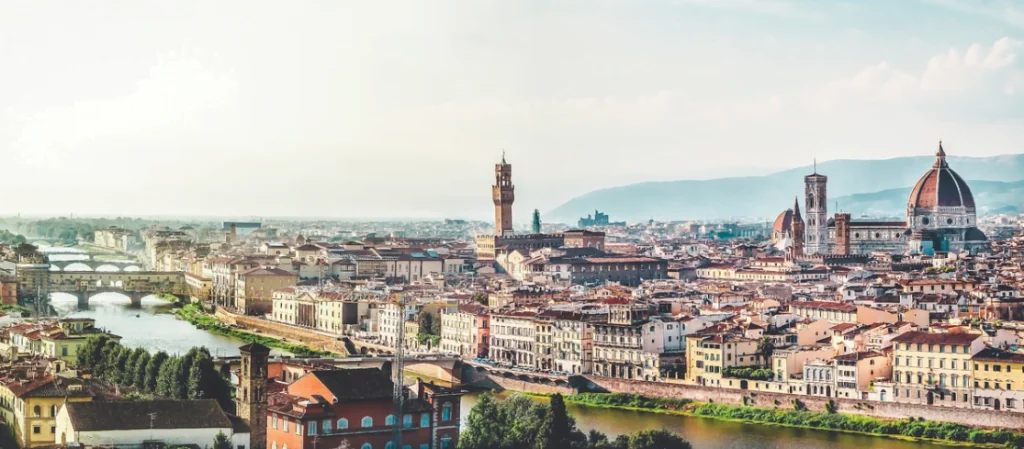
2. He was born out-of-wedlock
The parents of Leonardo weren’t married. His father was a wealthy Florentine notary named Piero Fruosino di Antonio da Vinci.
His mother is believed to have been a peasant woman named Caterina, who has been identified by reputable art professor and leading expert on Leonardo da Vinci, Martin Kemp, as Caterina di Meo Lippi.
3. This would turn out to be a blessing
First of all, illegitimate children didn’t carry a stigma that was prominent in other eras, so it was perfectly fine for people to have bastard children, and being illegitimate wasn’t looked down upon as well.

The reason this was a blessing is that he wasn’t required to follow in his father’s footsteps, which would have meant going to university and being indoctrinated by medieval scholastic learning of that time.
This is how he was able to follow his curiosity and explore areas he wouldn’t have been able to touch by getting a formal education.
4. He was born in a small Tuscan town
Leonardo was born in the small hill town of Vinci in central Italy. This is located in the lower valley of one of Italy’s biggest rivers, the Arno.
At the time, Vinci was part of the “Republic of Florence,” one of Italy’s many states in the 15th century. When Leonardo was born, it was under the rule of the House of Medici, a powerful Florentine banking and political family.
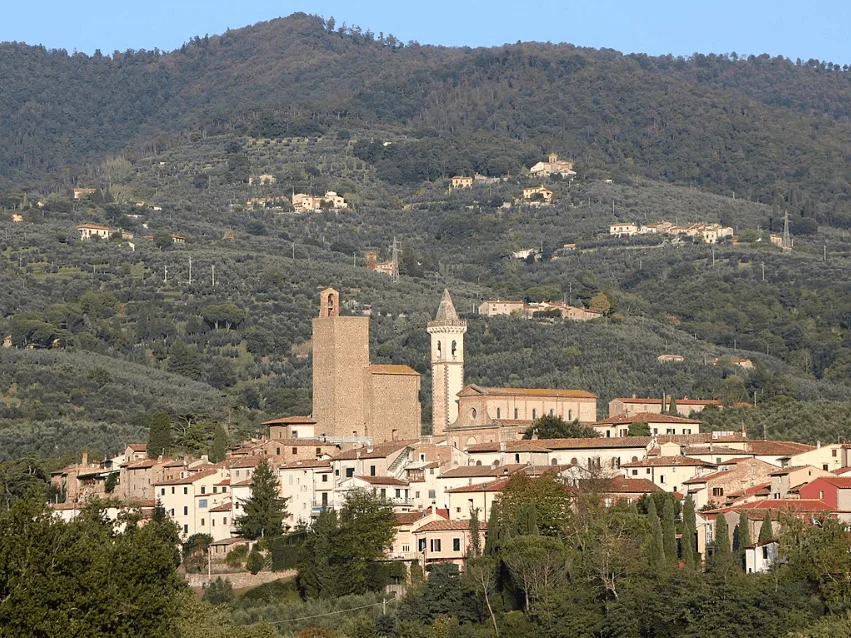
5. He didn’t have a surname
In the 15th century, people didn’t have a surname the way we have today. His surname simply means “of Vinci,” referring to the place he was born.
6. His birthname reveals his father was rich
His full name at birth was “Leonardo di ser Piero da Vinci,” which translates to “Leonardo, son of ser Piero from Vinci.”
“Ser Piero da Vinci” refers to his father, and “Ser” is short for “Messer,” the Italian version of “Sir,” which refers to the fact that his father was a “Gentleman.”
7. He had a lot of siblings
His father was clearly an active man and had multiple wives. His final 2 wives bore him 6 children each, which means Leonardo had a total of 12 brothers and sisters.
One of those interesting facts about Leonardo da Vinci is that he was not only the oldest of all his father’s children but that he was also 40 years older than the youngest.
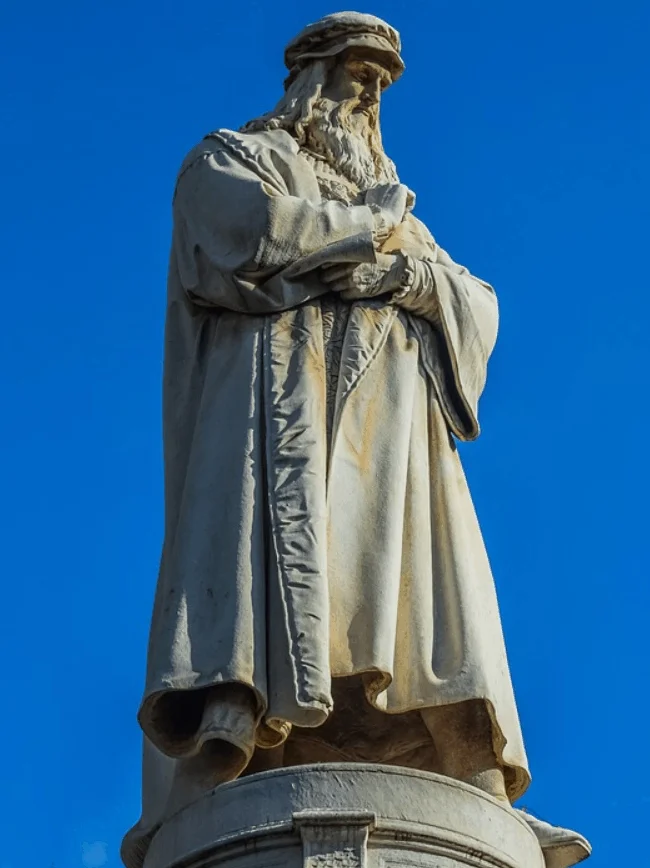
8. He wasn’t really a family man
Leonardo was pretty much doing his own thing his entire life. Even though he had 12 younger brothers and sisters, he didn’t have good contact with any of them, nor with his father.
One remarkable fact is that Leonardo was the only illegitimate child of his father and that the 12 legitimate children caused a lot of trouble for their father’s inheritance when he came to pass away.
The only time he made a reference to his own father in his numerous notes was at his death, and even then he overstates his age by 3 years.
9. He got a great mentor
When he was around 14 years old, his family moved to Florence. It’s around this time that his father was able to get him into the studio of “Verrocchio,” the leading painter and sculptor in Florence at that time.
He went on from being a mere “Garzone” or “Studio boy” to become an apprentice a few years later at the age of 17.

10. Verrocchio’s studio was a breeding ground for talented artists
Leonardo wasn’t the only famous painter to receive his training in Verrocchio’s studio. A large number of Florentine Early Renaissance painters spent their time sharpening their techniques there.
Some include “Sandro Boticelli,” most famously known for “The Birth of Venus,” and “Domenico Ghirlandaio,” who would eventually set up the studio that trained an artist of equal talent as Leonardo himself, Michelangelo.

11. Verrocchio stopped painting because of Leonardo
Whether or not the story is true remains doubtful, but it certainly shows the immense talent that Leonardo da Vinci already possessed when he was working as a young adult in Verrocchio’s studio.
While collaborating on a painting called “The Baptism of Christ,” he painted a young angel who holds Jesus’ robe. According to historian Giorgio Vasari, his contribution was deemed so superior to that of his master, that Verrochio decided never to pick up a brush again.
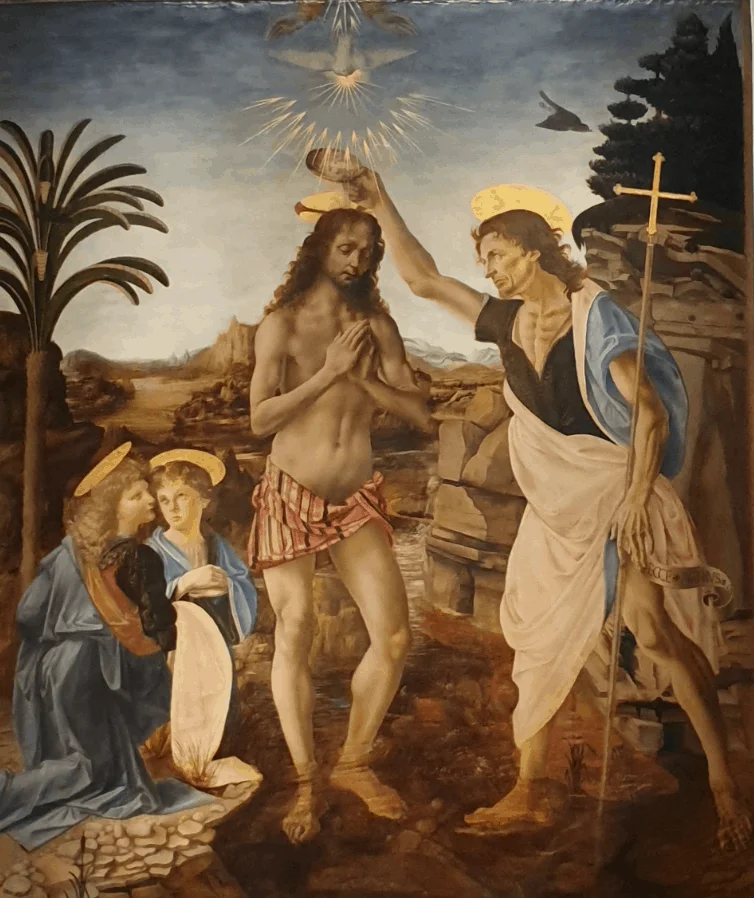
12. Leonardo might have been a model for 2 of Verrocchio’s works
According to a book by Angela Ottino Della Chiesa, Leonardo might have been the model of 2 for Verrocchio’s famous works while he was an apprentice in his studio.
One is the bronze statue of David, which is now located in the Palazzo del Popolo, an art museum in the city of Florence.
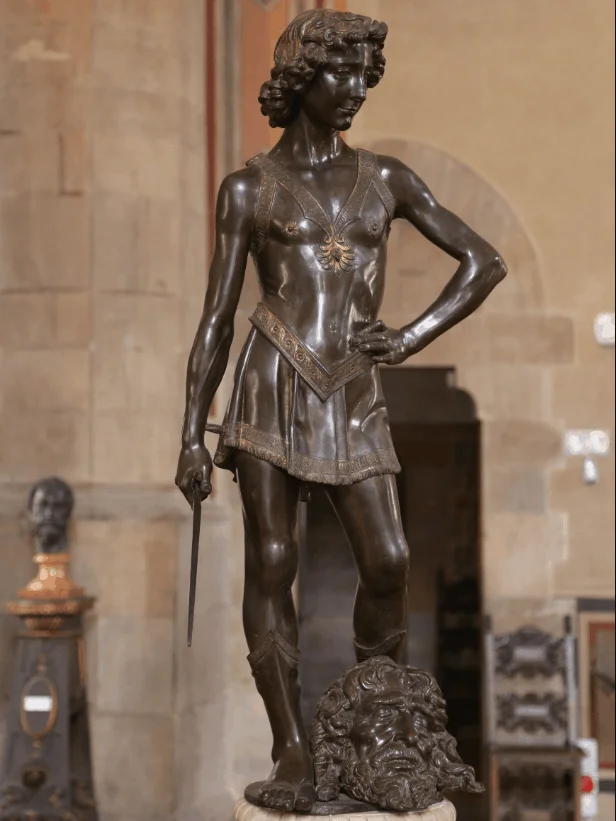
The other one is the Archangel Raphael in the painting “Tobias and the Angel,” which is now located in the National Gallery in London.

13. His first known solo work is a pen-and-ink drawing
In the year 1473, Leonardo made a pen-and-ink drawing of the Arno Valley. At the back, he wrote: “I, staying with Anthony, am happy.” Anthony probably refers to his father, meaning he probably was on a family visit in the countryside.
What’s remarkable about the drawing is that it is most probably the first pure and empirical landscape ever created in the Western World.
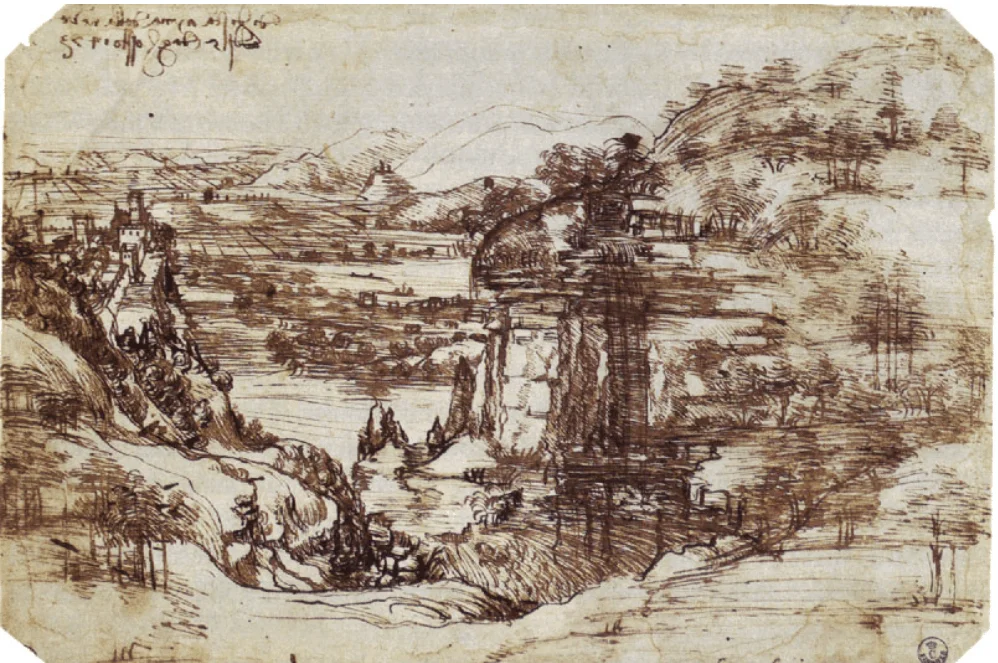
14. Did his first drawing give Leonardo inspiration?
According to Giorgio Vasari, Leonardo da Vinci was the first person to suggest making the Arno a navigable channel between the cities of Pisa (where the famous leaning tower is located and Florence.
At the time, the river wasn’t navigable until Florence and a sheet indicated that Leonardo wanted to bypass part of the river to make this possible.
The drawing he created surely made him connect some dots he didn’t see before and eventually turned him into a respected engineer and map maker.
15. His earliest work remained unfinished
When he moved out of the studio of Verrocchio, he got his first jobs in the city of Florence, including painting an altarpiece in the Palazzo Vecchio, and the “Adoration of the Magi.”
Just as many of his other works, he left them unfinished as he got distracted, something which would become the tune of his life.

16. he got a much better offer
The main reason he got distracted and didn’t finish the work he was commissioned is that he got an invitation from Ludovico Sforza, the Duke of Milan.
Apparently, he liked it in the Italian city of Milan as he worked there from 1482 until 1499, only moving because he fled the Second Italian War which saw his master, Ludovico Sforza, overthrown.
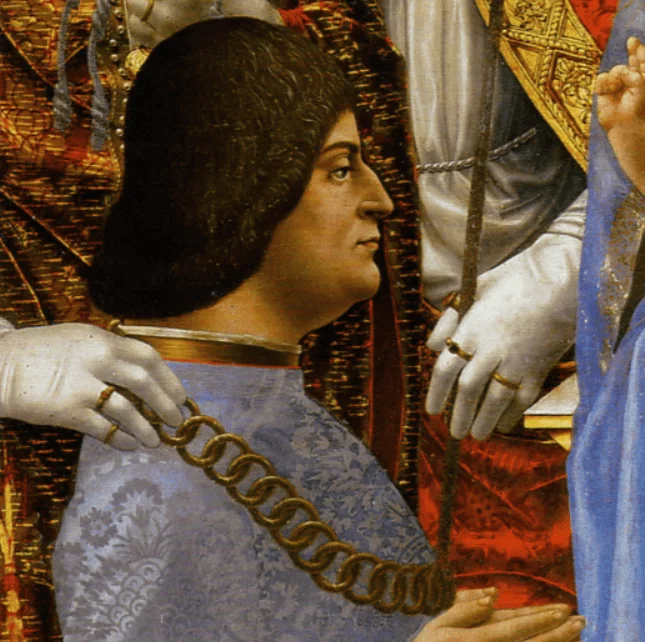
17. Two of his most famous paintings date from this period
While in Milan, he was instantly commissioned two paintings. One was “Virgin of the Rocks,” of which he actually created two versions. The main version, which is unrestored can be found in the Louvre in Paris, the restored version can be found in the National Gallery in London.
The other famous painting is a mural located in the Convent of Santa Maria Delle Grazie in Milan and is one of the most recognizable paintings in history, The Last Supper.
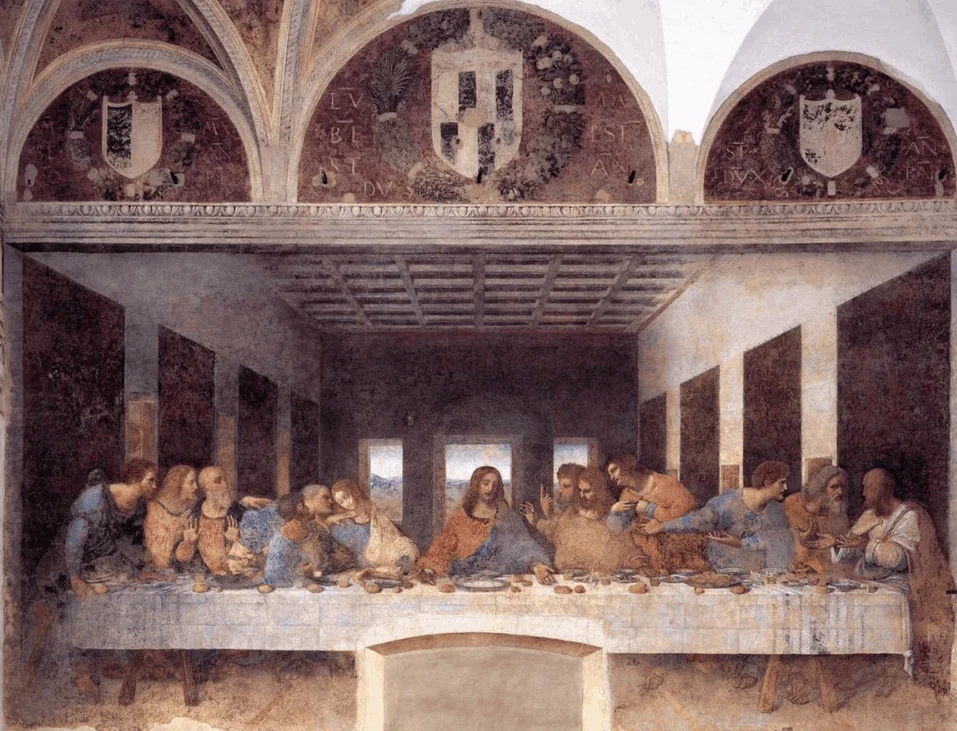
18. He created an immense horse that was never casted
Another one of his master’s projects commissioned to Leonardo was a huge bronze horse, with Ludovico Sforza sitting on top of it.
He got all the way to the final stage and was about to execute his newly created technique of casting 79,000 kilos of bronze that were supposed to pour through tubes into the molds, but he was halted by the Second Italian War, which ended badly for Sforza in 1499.
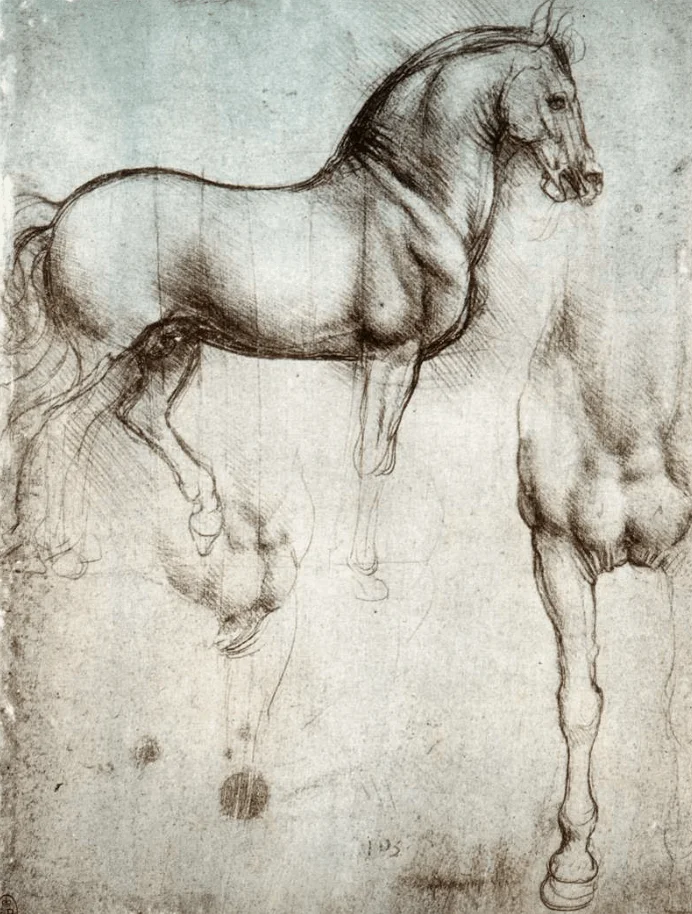
After leaving Milan, he briefly settled in Venice but shortly after went back to the place he knew best, Florence.
It’s believed that he created a drawing in Florence around the year 1500 which acquired such admiration, that people were literally lining up to get a glimpse of it, which can be described as “going viral in 1500.”
The drawing is called “The Virgin and Child with Saint Anne and Saint John the Baptist,” and was made on 8 papers glued together in charcoal and black and white chalk.
It’s believed that this drawing inspired a later painting called The Virgin and Child with Saint Anne (which he never finished) as it features a similar composition.

20. He created something very rare and was hired instantly
The talent of Leonardo da Vinci had, just like imagination, no boundaries. When he visited Cesena, he impressed Cesare Borgia, whose fight for power was the main inspiration for The Prince by Machiavelli.
Leonardo created something so rare that he was hired on the spot by the military-minded Borgia, a map of Borgia’s stronghold, the city of Imola.
Borgia hired Leonardo as his chief military adviser and engineer.

21. He never finished the Mona Lisa
In 1503, Leonardo returned to his beloved Florence after discontinuing his services for Borgia. It’s in this period that he is believed to have started painting the Mona Lisa, a portrait of Lisa del Giocondo.
What many people don’t realize is that he never delivered and didn’t even finish the Mona Lisa in his lifetime. He did, however, take it everywhere with him as it is believed to have been one of his favorite paintings, and that’s how it ended up in France eventually.
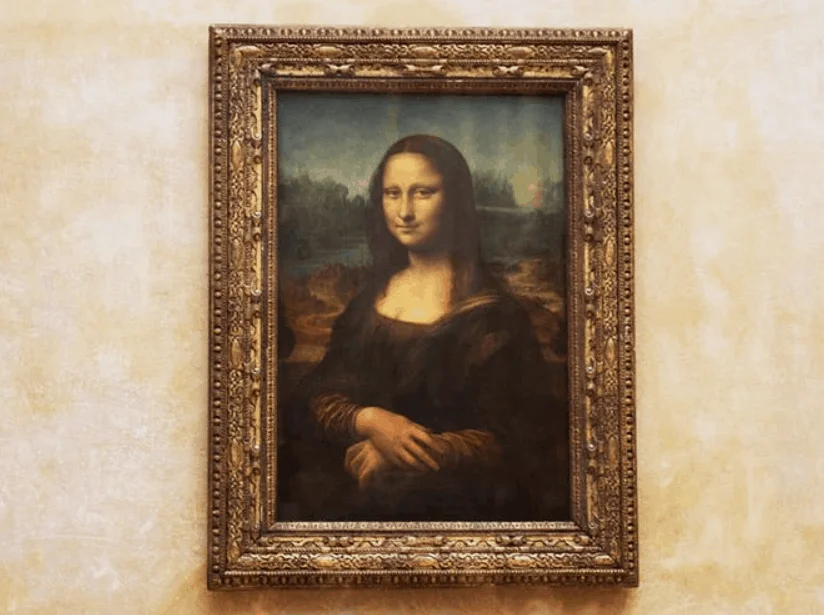
22. He was together with Michelangelo and Raphael
After a period back in Milan, he moved to Rome in 1513 and stayed there until 1516. One of those interesting facts about Leonardo da Vinci is that he was a contemporary of some of the most famous artists in history, including Michelangelo and Raphael.
In Rome, he was living in the Belvedere Courtyard in the Apostolic Palace, where both Michelangelo and Raphael were active as well at this time.
Raphael was working on the famous “Stanze” (1514) or “Raphael Rooms” in the Vatican palace, now on public display in the Vatican Museums. Michelangelo was working on the ceiling in the Sistine Chapel.

23. Michelangelo wasn’t his best friend though
Even though two of the most illustrious artists of all time were living in the same period, they didn’t really hang out together. It all started when Michelangelo mocked Leonardo about not being able to finish any of his work, especially the huge horse he was preparing for casting earlier.
He took it the wrong way and the two remained bitter rivals until Leonardo’s death, but ultimately leaving his revenge on his notebooks.
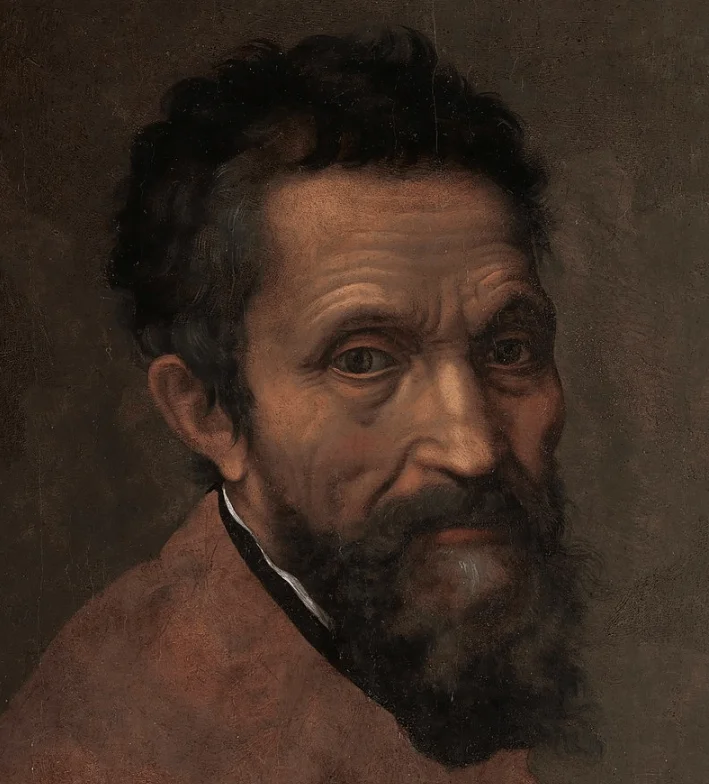
24. His health was already deteriorating
During his time in Rome, Leonardo’s health was already deteriorating and he suffered from what is believed the first of many of his strokes.
One theory is that he wasn’t able to finish the Mona Lisa because he suffered from claw hands as a result of one of his strokes. This condition didn’t allow him to use one of his hands anymore to paint as the fingers were permanently bent.

25. His relationship with the Pope deteriorated as well
The Pope, Leo X, had commissioned a painting (of which the subject is unknown) but quickly withdrew this commission.
The reason?
Instead of instantly starting with the painting, Leonardo first wanted to create a new type of varnish, which made the Pope impatient. It went that far that the Pope remarked:
“This man will never accomplish anything! He thinks of the end before the beginning!”
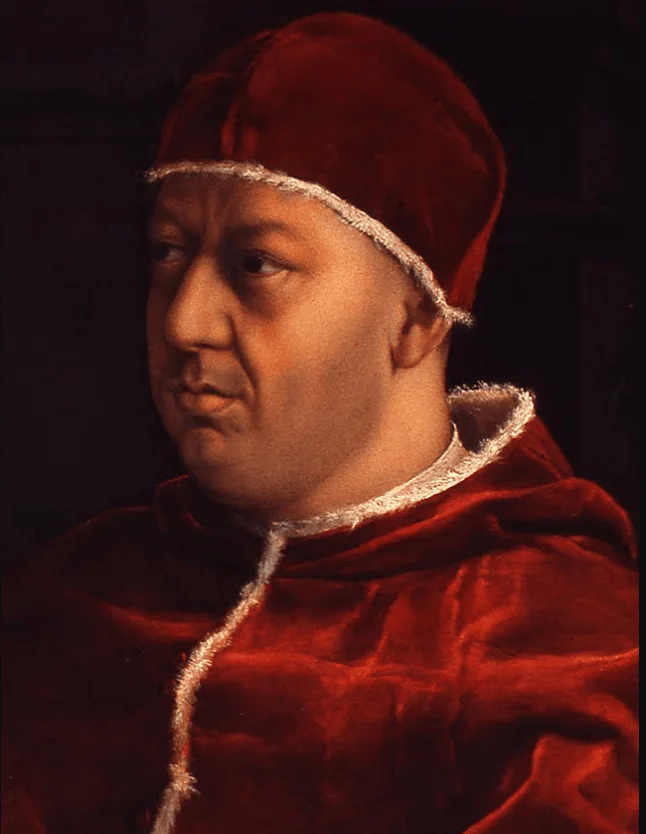
26. Leonardo moved to France
France had recaptured Milan once again in 1515, and at the request of King Francis I of France, he entered his service and moved to France.
To emphasize the status that Leonardo had acquired by the time, he was actually given a mansion at Clos Lucé, not too far from the king’s residence at the royal Château d’Amboise.

27. Leonardo was full of repentance on his deathbed
After several more strokes, Leonardo became bedridden during the last months of his life, which he spent in France alongside his good friend, King Francis I.
What was his repentance about?
He believed he could have done so much more with his talent if he had put in more effort. After all, he left most of his work unfinished and was mostly distracted and in a state of procrastination.
Leonardo da Vinci died at Clos Lucé on May 2, 1519, at the age of 67, possibly of a stroke.
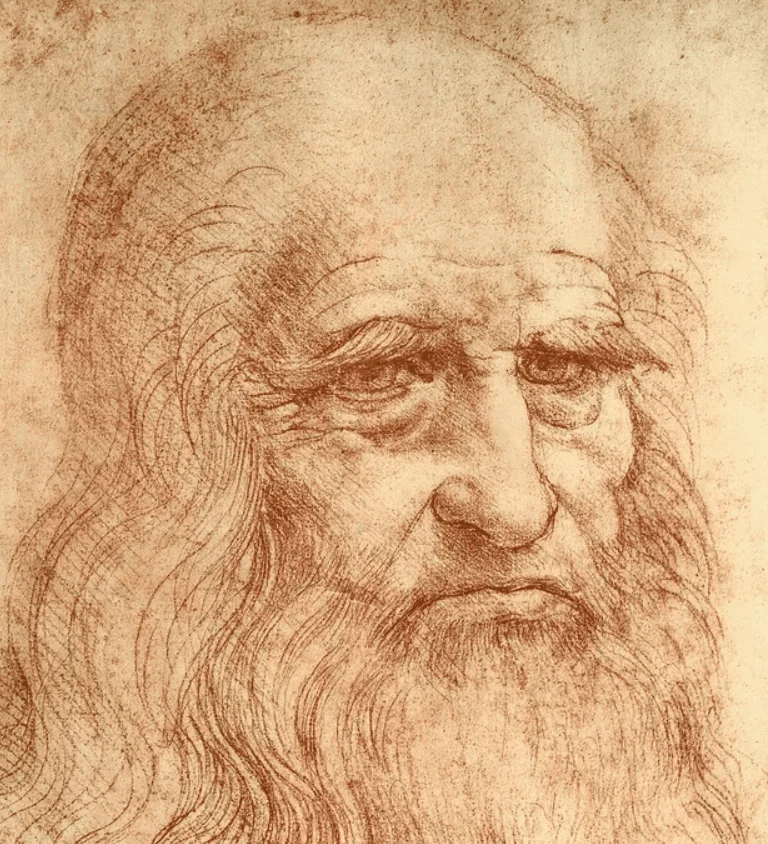
28. The church he was buried was destroyed
During the French Revolution, the anti-clerical revolutionaries damaged the Collegiate Church of Saint Florentin at the Château d’Amboise in such a way that it was demolished in 1802.
Some of the graves were destroyed in the process, but one skeleton, with a ring and hair, was found and which is believed to be the remains of Leonardo.
The plaque in the church explains that the final resting place “possibly” contains the remains of Leonardo da Vinci.
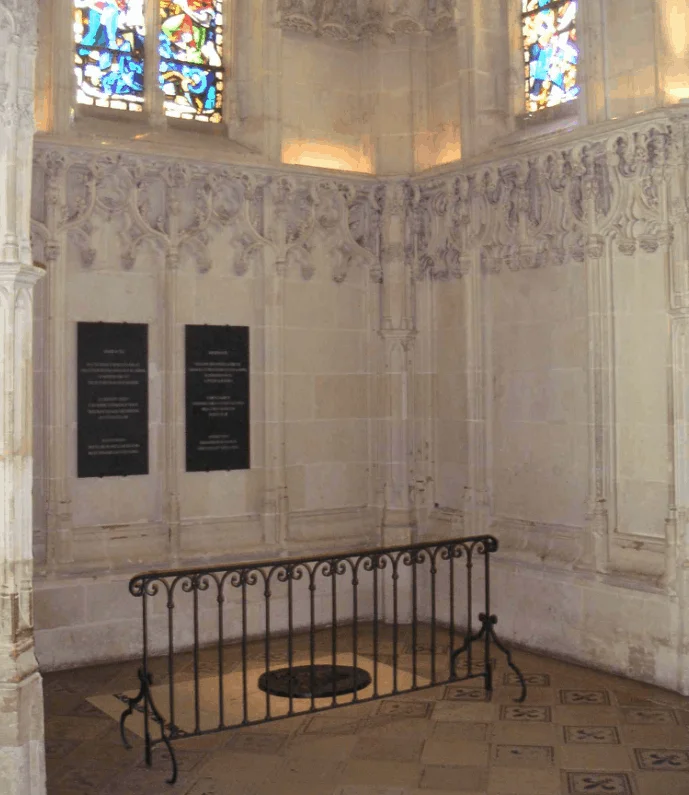
29. Leonardo loved animals
Apart from being one of the most talented people to have ever lived in terms of skills, he was also one of the most compassionate.
This is emphasized especially by his love of animals. One anecdote that illustrates this is the fact that he would scour the markets for sellers of caged birds, pay them whatever they wanted and instantly let them fly to freedom.
It’s needless to say that he was also a vegetarian.
30 He was ambidextrous
This refers to the ability to be able to use the right and left hand equally well. In the case of Leonardo, who has always been assumed to be left-handed, this also translated into being able to write from the right to the left side.
This basically means that he was able to write text as if you would see it in a mirror.
31. He left a legacy that few people can match
His area of interest and mastery of the subject is unparalleled. It includes invention, drawing, painting, sculpture, architecture, science, music, mathematics, engineering, literature, anatomy, geology, astronomy, botany, paleontology, paleontology, ichnology, cartography, and architecture.
Giorgio Vasari summarized it perfectly in his biography of da Vinci (1568):
In the normal course of events many men and women are born with remarkable talents; but occasionally, in a way that transcends nature, a single person is marvellously endowed by Heaven with beauty, grace and talent in such abundance that he leaves other men far behind, all his actions seem inspired and indeed everything he does clearly comes from God rather than from human skill. Everyone acknowledged that this was true of Leonardo da Vinci, an artist of outstanding physical beauty, who displayed infinite grace in everything that he did and who cultivated his genius so brilliantly that all problems he studied he solved with ease.
Giorgio Vasari on Leonardo da Vinci
More interesting facts about Leonardo da Vinci
32. Even though Leonardo spent the first years of his life living with his mother in the small village of Anchiano, he moved in with his father at the age of 5.

33. He didn’t just live with his father, as he also lived in the household of his uncle and grandparents in the small town of Vinci.
34. There have been many theories regarding the real identity of Leonardo’s mother. Some theories claim his mother was a slave girl, as his father was known to own a slave at that time. Others claim his mother was of Middle-Eastern descent. This was until Martin Kemp started digging in overlook archives in Italy and found evidence her real name was Caterina di Meo Lippi and was a local peasant woman.
35. His father married 2 young women when Leonardo was still in his teens. Both of them died young without giving birth to children. His next 2 wives, whom he married when Leonardo was already an adult, gave birth to 6 children each.
36. Leonardo didn’t just learn how to paint in the studio of Verrocchio. He also learned skills in drafting, chemistry, metallurgy, metalworking, plaster casting, leatherworking, mechanics, and woodwork, drawing, painting, sculpting, and modeling.
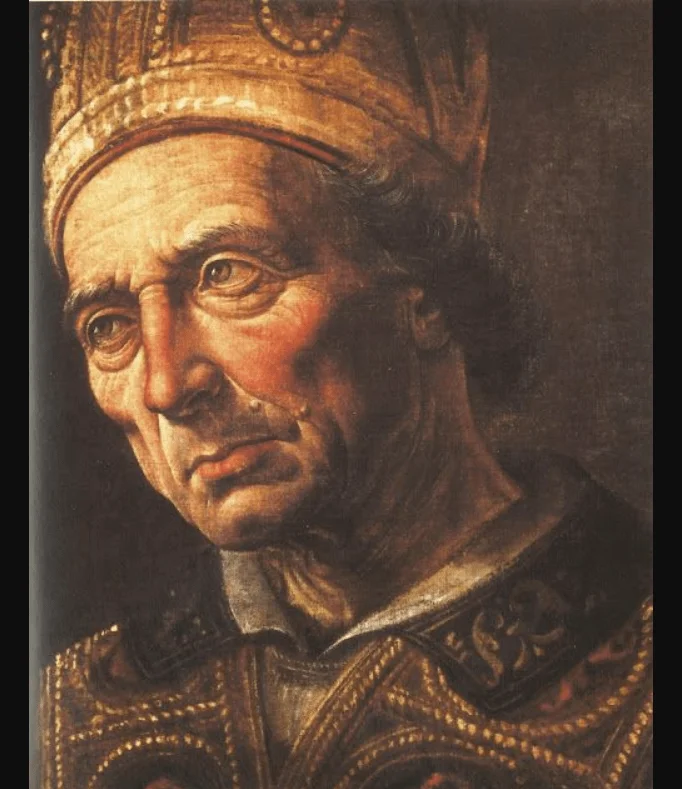
37. He was already considered a master at an early age. This is proven by his admission to the Guild of Saint Luke, the guild of artists and doctors of medicine. This happened in the year 1472 when he was just 20 years old.
38. The bronze that was supposed to be used for the huge equestrian statue for Ludovico Sforza was used to build a canon in late 1494 to protect Florence from the French. It didn’t help and the clay model of the horse that existed was used by the French for archery practice, completely decimating it in the process.
39. The French did, however, learn a thing or two from Leonardo. The Sun King, Louis XIV, used the same casting technique 200 years later to create a similar statue for himself to decorate his pleasure dome, the Palace of Versailles. What’s even more remarkable is that this technique is still used today!
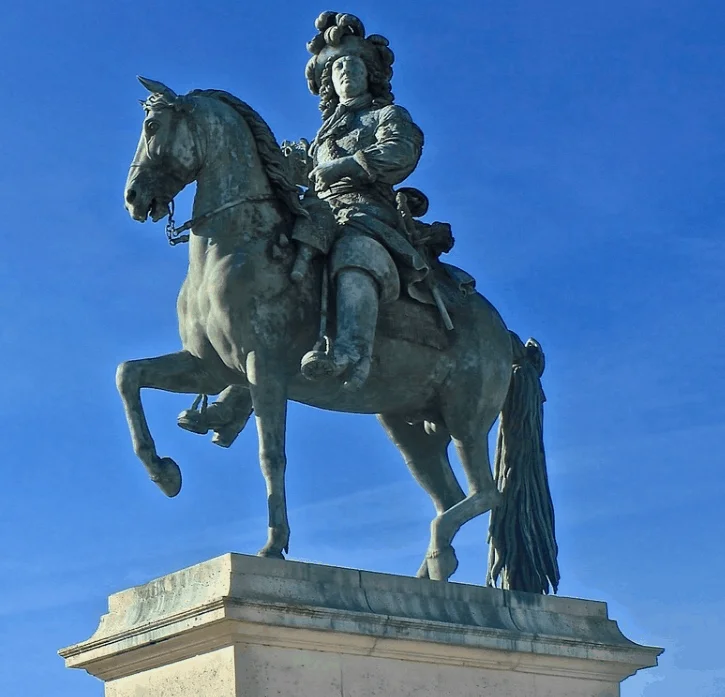
40. While da Vinci was creating maps for Cesare Borgia, he used part of his ideas to create a plan for a dam from the sea to Florence. This would allow a supply of water to sustain the canal during all seasons. It shows that Leonardo was full of ideas and partially explains why he left so many things unfinished.
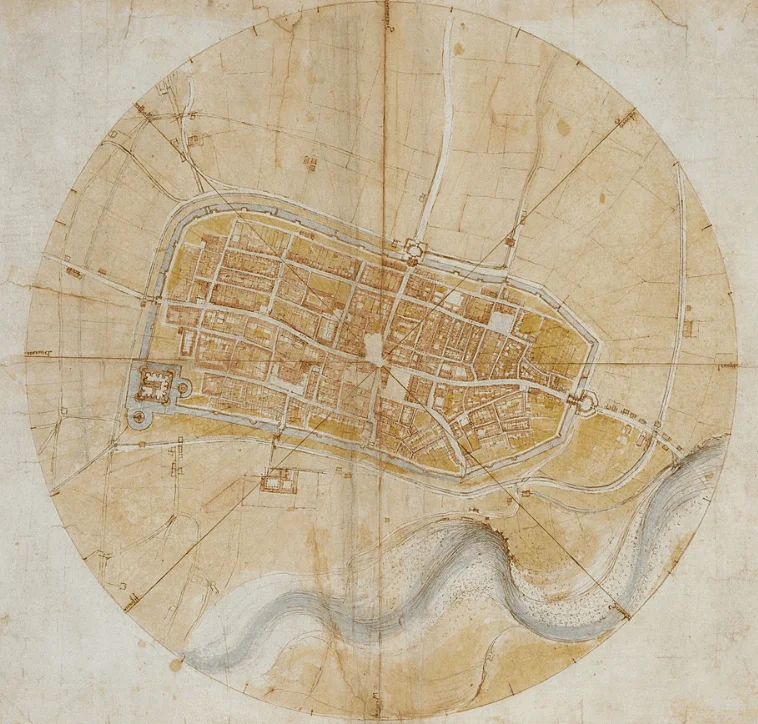
41. When he returned to Florence in 1503, Leonardo rejoined the Guild of Saint Luke, the famous guild for artists which he joined earlier at the age of 20.
42. It’s believed that the Mona Lisa wasn’t just his most favorite painting, one he worked on until the moment he passed away, he also carried it with him everywhere he went.
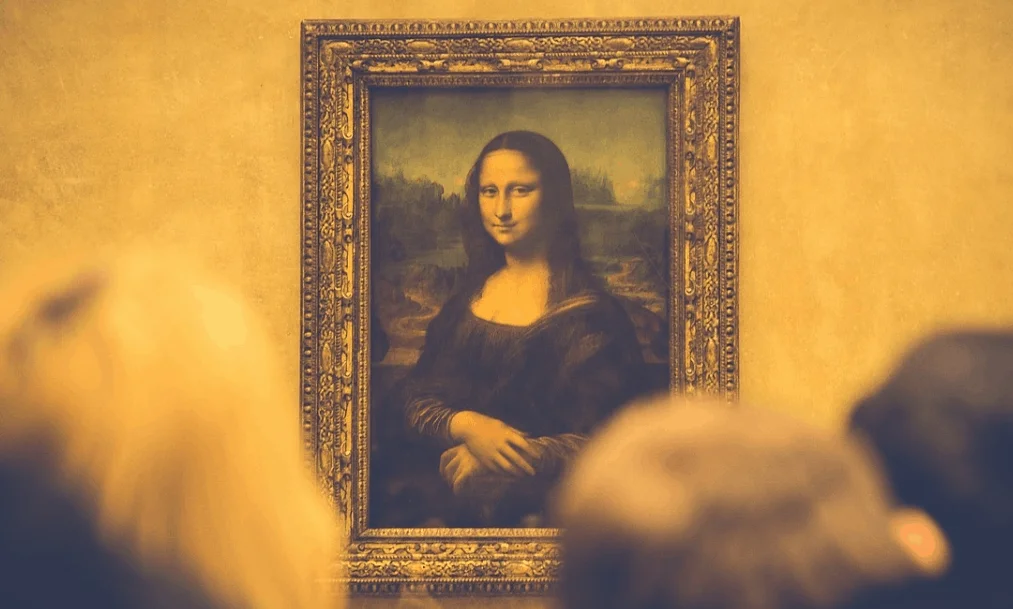
43. When he was living in the Belvedere Courtyard in the Apostolic Palace in Rome, he was given 33 Ducats (silver coins) a month as an allowance, and according to Vasari, used it to decorate a lizard with scales dipped in quicksilver.
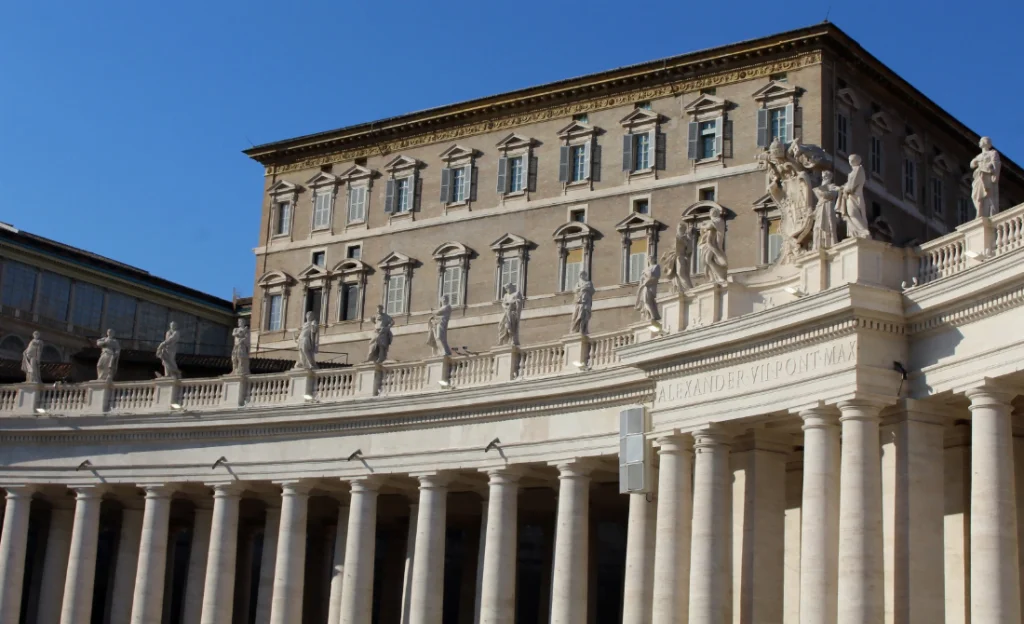
44. Did he have to do something to earn this allowance? Yes, he was both working in the gardens of Vatican City as a botanist and was also commissioned to create a plan to drain the Pontine Marshes, a swamp near the Vatican.
45. During the 500th anniversary of Leonardo’s death, the ring and hair that were found in what is assumed to be his grave were on display in the Leonardo Museum in Vinci.
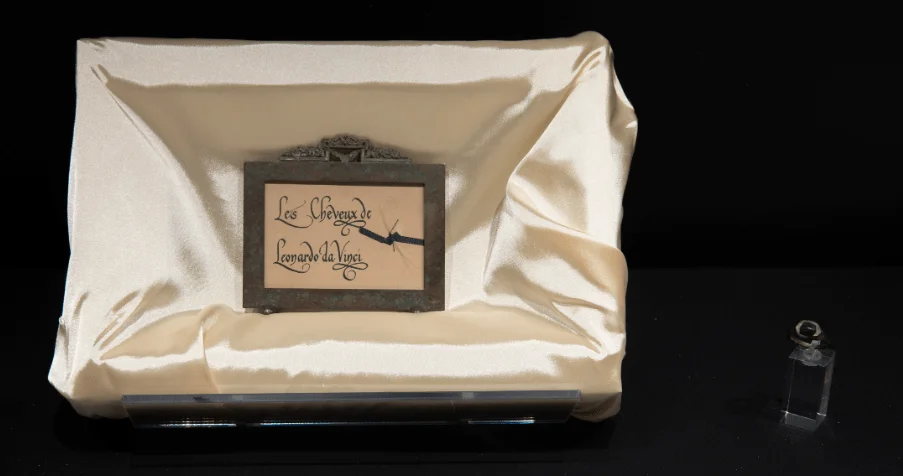
46. Even though Leonardo and the other 2 world-famous artists of the High Renaissance were living in the same period of time, they were not of the same generation. Leonardo was already 23 when Michelangelo was born and 31 when Raphael was born.
47. One of Leonardo’s paintings sold for over USD 450 million in 2017. “Salvator Mundi” which he painted around 1500 and which depicts Jesus Christ was sold at New York-based auction house Christie’s to Prince Badr bin Abdullah of Saudi Arabia. This makes it the highest price ever paid for a painting in history.

48. But that’s not all. One of his notebooks called the “Codex Leicester” which he created between 1506 and 1510 recently sold for USD 30.8 million as well. Who bought it? Microsoft founder and CEO, Bill Gates!
49. Apart from several inventions which were actually manufactured, such as an automated bobbin winder and the machine for testing the tensile strength of wire, he is also credited with the invention of the parachute, helicopter, and tank, none of which were feasible technologically during his lifetime.


Leave a comment
You must be logged in to post a comment.